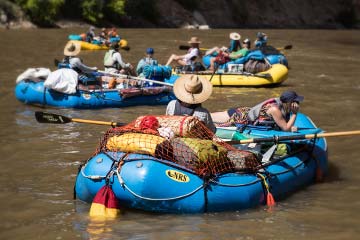Perfecting the Kayak Forward Stroke
Due to your cookie choices, we cannot show you this content. Adjust your settings?
The forward stroke is the most used and most important kayak paddle stroke. Learning to execute it correctly will make your kayaking more effortless and enjoyable. In this video expert kayaking instructor Ken Whiting breaks the stroke down into its component parts to clearly show how it's done right.
In its simplest form the forward stroke consists of planting the paddle blade at your toes and pulling it through to your hip. By breaking the stroke down into its three parts: the catch, the rotation and the recovery, we can examine the stroke more carefully and show how it’s done most efficiently.
The catch is where you plant the blade in the water. Sitting up straight, with a relaxed grip on the paddle you reach out not only with your arms, but with your shoulders to place the blade fully in the water. Reaching with your shoulders involves twisting at the waist. If you’re taking a stroke on the left, you’ll twist your left shoulder forward. Then as you complete the stroke, you’ll end up with your right shoulder twisted forward. This puts your body’s core muscles into the stroke, along with your arms, and is referred to as torso rotation.
Now, with your right twisted forward, you’re in the perfect ergonomic position to take your next stroke. Imagine you’re planting your paddle in cement when you take a stroke. The paddle shouldn’t really move anywhere; instead you should really be pulling yourself forward past where it went into the water.
Your body is like an elastic band; when it’s wound up it contains a lot of potential energy. Rotation refers to how you use that energy to power your stroke. Done properly, your arms are merely a supplement to the power your torso supplies. As you’re pulling your paddle blade, keep your elbows bent and low. The range of motion of your arms is quite small, as your torso will be doing most of the work. The more vertical you hold the paddle shaft (high angle), the more power you can put into the stoke. This also takes more energy, so holding the paddle less vertical (low angle), serves better for long-distance paddling.
When the paddle blade reaches your hip, you’re ready for the recovery phase of the forward stroke. You slice the blade up out of the water, plant the other blade in the water and rotate your torso to complete the next stroke.
Practice keeping your boat as quiet in the water as possible. This gives you the most efficient forward progress possible. And keep a relaxed grip on the paddle!
 NRS Gift Card: Always Fits, Always Wanted
NRS Gift Card: Always Fits, Always Wanted




